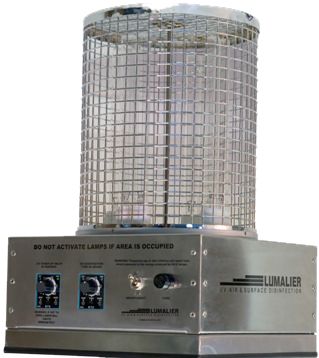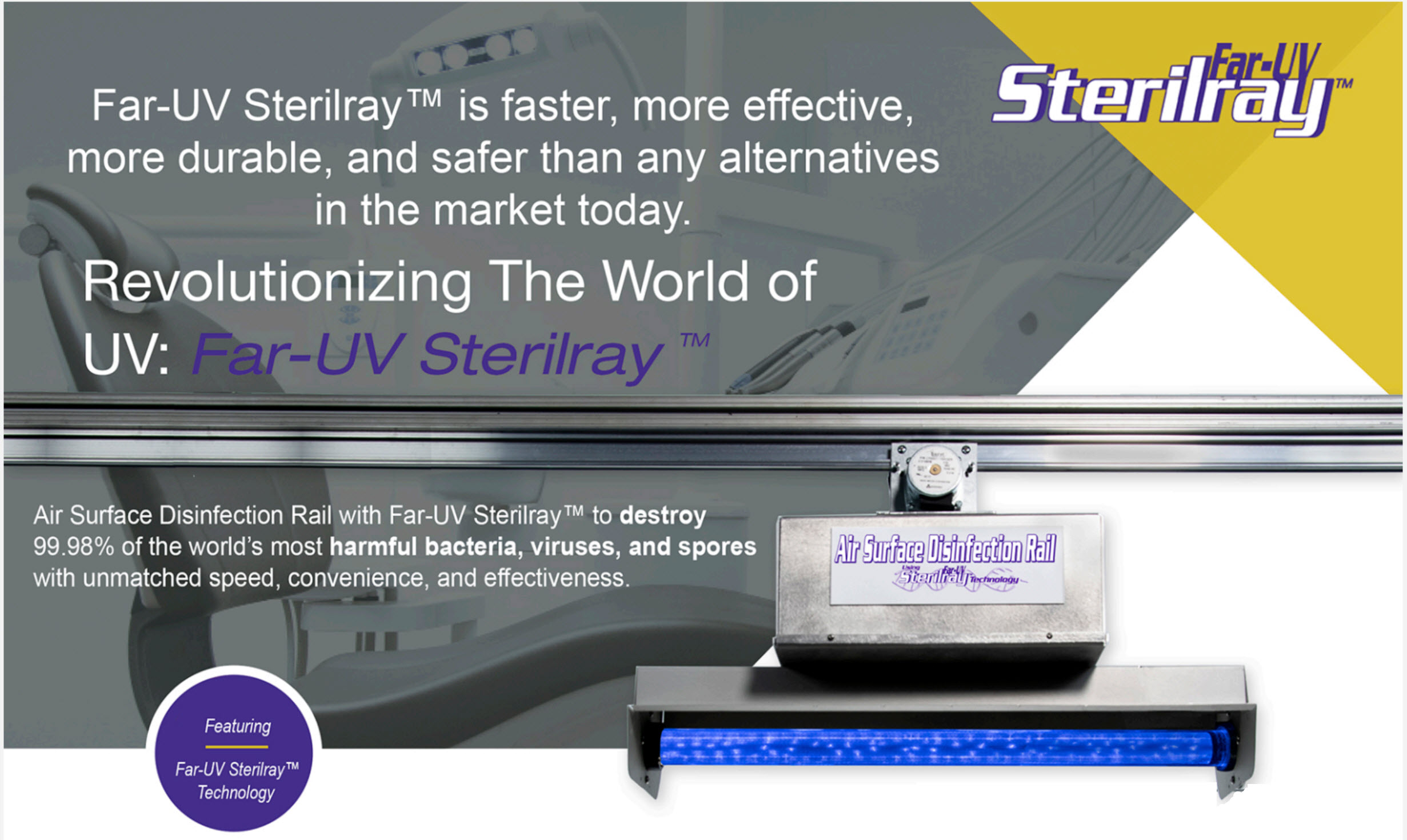Future-Proofing Your Space: Incorporating UV Surface Disinfection for Ongoing Protection
Taking Advantage Of the Potential of UV Sanitation: Safeguarding Health and Health
UV sanitation, a modern technology widely used in different sectors, has actually proven efficient in removing harmful pathogens. From comprehending the systems at play to applying this modern technology in our daily lives, this discussion aims to drop light on the capacity of UV sanitation and its duty in guarding our health and hygiene.
Understanding UV Disinfection
UV disinfection is an extremely efficient and commonly utilized technique for making certain and removing unsafe pathogens health and health. This strategy makes use of ultraviolet (UV) light to suspend microbes by damaging their DNA and avoiding them from recreating. UV disinfection is particularly effective against microorganisms, viruses, and other bacteria that can cause illness and infections.
The principle behind UV disinfection is simple yet effective. When UV light is produced at a specific wavelength, it penetrates the microbe's cell wall surface and disrupts its genetic product. This procedure, referred to as photodissociation, results in the development of thymine dimers, which protect against the bacterium from duplicating and rendering it safe. UV disinfection can be applied in numerous setups, including water therapy plants, health care facilities, food handling markets, and air purification systems.
One of the benefits of UV disinfection is its capacity to successfully and efficiently get rid of a wide variety of microorganisms without the demand for additives or chemicals. Unlike various other sanitation techniques, such as chlorine or ozone, UV sanitation does not introduce harmful spin-offs or chemical residues into the environment. Furthermore, UV sanitation is a non-contact process, which suggests that it does not need physical call with the microorganisms, lessening the risk of cross-contamination.

The Science Behind UV Disinfection
The performance of UV disinfection exists in its capacity to disrupt the hereditary product of microorganisms, making them incapable to replicate and thus removing their harmful capacity. UV, or ultraviolet, radiation is a kind of electro-magnetic radiation with wavelengths shorter than visible light. It is classified right into 3 types: UV-C, uv-a, and uv-b. UV-C radiation, specifically, has the shortest wavelength and the greatest power. This high-energy UV-C radiation is most effective in disinfection applications since it can permeate the cell wall surfaces of microbes and harm their DNA or RNA.
When bacteria are exposed to UV-C radiation, the energy is absorbed by their hereditary product, creating bonds to damage and developing chemical reactions that disrupt their ability to reproduce. This prevents the microbes from spreading out and duplicating infection. UV disinfection is particularly reliable versus microorganisms, fungis, and viruses, consisting of common pathogens such as Escherichia coli, Salmonella, and Flu.
The science behind UV disinfection is sustained by comprehensive research and researches. It has actually been shown that direct exposure to an adequate dose of UV-C radiation can attain a high level of disinfection, usually going beyond 99.9% effectiveness in eliminating bacteria. However, it is very important to note that the performance of UV disinfection depends on various aspects, including the intensity of UV-C radiation, direct exposure time, range from the UV source, and the sensitivity of the microbe to UV radiation.
Applications of UV Sanitation
Provided the comprehensive study and efficacy of UV sanitation in disrupting the genetic product of microorganisms, it is necessary to explore the numerous practical applications of this modern technology. UV sanitation has confirmed to be an important device in a wide variety of sectors where maintaining a clean and secure atmosphere is essential.
One major application of UV disinfection remains in medical care settings. UV light can be used to sanitize surface areas, tools, and also the air in medical facilities and clinical centers. This aids to reduce the risk of healthcare-associated infections and guarantees a much safer setting for people and healthcare workers.
Another essential application is in the food and beverage market. UV disinfection is used to treat water and eliminate damaging microorganisms, such as E. coli and Salmonella, from the manufacturing procedure. uv surface disinfection. This makes sure the safety and security and top quality of the items we eat
UV sanitation is likewise commonly utilized in water treatment plants and wastewater treatment facilities. It is an effective method for destroying harmful bacteria, infections, and bloodsuckers that can check this site out be existing in water resources. This assists to offer clean and safe alcohol consumption water to neighborhoods and safeguard the environment from pollution.
Additionally, UV sanitation is utilized in the pharmaceutical market to sanitize equipment and keep the stability of products. It is also made use of in research laboratories and research study facilities to avoid contamination and ensure exact results.
Advantages of UV Sanitation Innovation
One remarkable advantage of utilizing UV disinfection technology is its capacity to successfully eliminate microorganisms without using rough chemicals. This is especially beneficial in various setups, such as health care facilities, water therapy plants, and food processing industries, where the existence of damaging pathogens postures a considerable threat to public wellness and security.
Unlike traditional sanitation methods that depend on chemicals like chlorine or ozone, UV disinfection modern technology uses ultraviolet light to target and destroy the DNA of bacteria, effectively counteracting their ability to duplicate and cause infections. This procedure not only gets rid of the need for potentially harmful chemicals however additionally decreases the threat of chemical residue or results remaining in the cured setting.

Moreover, UV sanitation modern technology is eco friendly. As it does not rely on making use of chemicals, it gets rid of the requirement for their production, transport, and disposal, decreasing the general carbon footprint related to disinfection processes. Additionally, UV disinfection systems have a longer lifespan contrasted to chemical-based approaches, causing much less regular replacement and further decreasing waste.
Executing UV Disinfection in Daily Life
To effectively implement UV sanitation in every day life, people and companies can include mobile UV sterilizing gadgets into their health regimens and cleaning up practices. These devices are made to emit ultraviolet light, which has actually been verified to kill or suspend a wide variety of bacteria, including viruses, fungi, and microorganisms. By using mobile UV sanitizing tools, individuals can decontaminate frequently touched surfaces and things, such as mobile phone, doorknobs, laptops, and secrets, reducing the danger of spreading bacteria and infections.
In enhancement to integrating mobile UV sterilizing tools, it is necessary to adhere to proper standards and recommendations for efficient UV disinfection. This includes making certain that the device is utilized correctly and for the suggested period to accomplish optimum disinfection results. It is additionally essential to focus on safety and security steps, such as using safety eyewear and preventing straight exposure of the UV light to the skin.

In addition, organizations can execute UV disinfection modern technology in different settings to boost health practices. For instance, health centers and health care facilities can make use of UV disinfection robots to disinfect client rooms, running movie theaters, and various other high-touch areas. Food processing sectors can integrate UV sanitation systems into their assembly line to enhance food safety and security and avoid contamination.
Verdict
In conclusion, UV disinfection innovation holds wonderful potential in protecting health and wellness and health. With its countless benefits, UV disinfection is a valuable tool for preserving a clean and healthy and balanced environment.
Unlike various other sanitation approaches, such as chlorine or ozone, UV visit this website sanitation does not introduce hazardous spin-offs or chemical residues into the atmosphere. It is crucial to keep in mind that the efficiency Home Page of UV sanitation depends on different aspects, consisting of the strength of UV-C radiation, direct exposure time, distance from the UV source, and the vulnerability of the bacterium to UV radiation.
One more advantage of UV disinfection technology is its ability to provide rapid and continual sanitation. Unlike handbook cleaning methods, which can be time-consuming and call for substantial labor, UV sanitation systems can be automated and operate constantly, guaranteeing consistent sanitation without human treatment.To successfully execute UV disinfection in day-to-day life, organizations and people can integrate portable UV sanitizing tools right into their hygiene routines and cleansing methods.